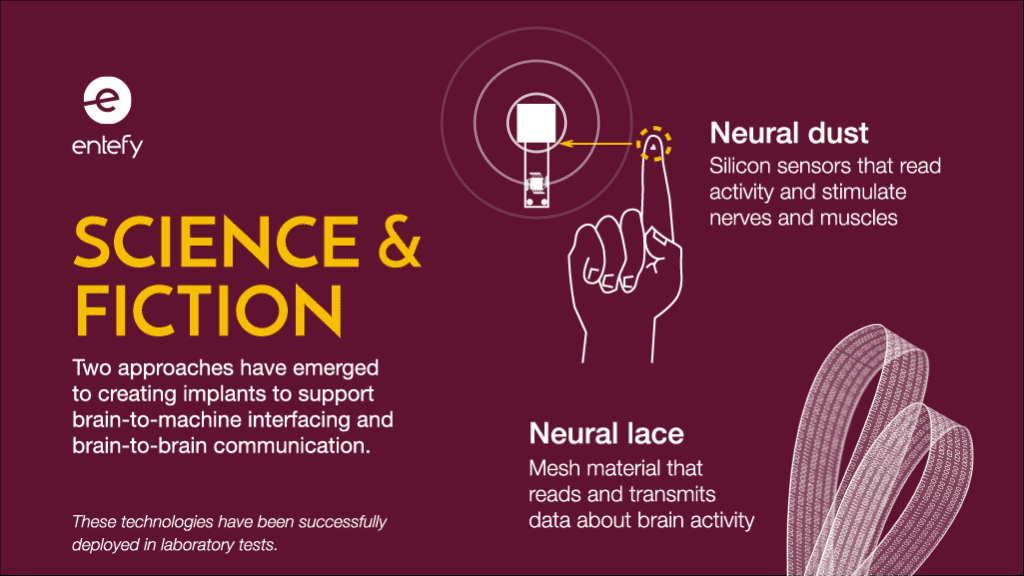Early computers used punch cards. With the PC came the keyboard and mouse. Today, conversational interfaces are improving in accuracy and effectiveness. What’s next?
If scientists and entrepreneurs have their way, the future of computer interfaces is devices that connect us to computers using just our thoughts. It sounds like science fiction but when you’re talking about rewriting the rules of human communication, it’s worth considering just how feasible the technology might be. After all, the human brain contains around 100 billion neurons with more than 100 trillion synaptic connections between them, arranged in a system that is as unique as a fingerprint. It’s not that easy to mimic its function in silicon.
And yet there are already working examples of precursor technologies that might one day enable brain-to-computer or even brain-to-brain communication. Two leading technologies for brain-implanted devices are neural lace and neural dust. Here’s what we know about each of these technologies, still very much in the laboratory stage of development. You can read more about the science and fiction of brain-to-brain communication in Entefy’s article, “Are you thinking what I’m thinking? The new science behind brain-to-brain communication.”
Neural lace is a fine mesh studded with electrodes and designed to be injected into brain tissue using a syringe. The material then unrolls in the brain where it begins recording nearby neural activity. Neural lace has been successfully implanted in rodents, where it recorded neuronal activity without triggering an immune-system response.
A second promising brain interface concept is neural dust, tiny silicon sensors designed to read neural activity and stimulate nerves and muscles. Neural dust is stimulated by an external ultrasound transmitter that both controls the dust and reads its informational output. The ultrasound also powers the dust, eliminating the need for a separate power source.
Are we likely to buy brain-to-computer devices at the local electronics store any time soon? Don’t throw away your keyboard and mouse just yet. These advancements, along with other frontiering technologies like artificial intelligence, robotics, and self-driving cars, are aimed to fundamentally change how people communicate, live, and work.
Read the original article here.
